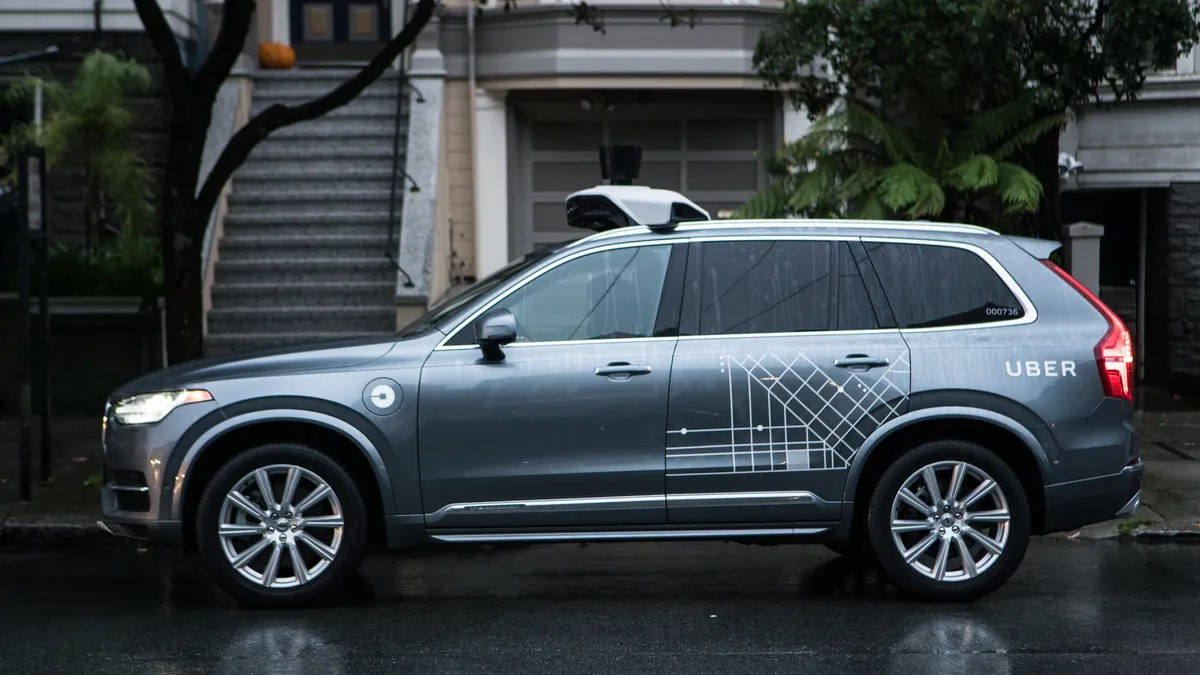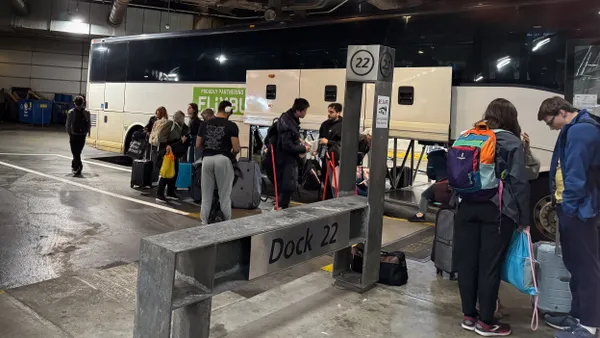Dive Brief:
- The family of a woman who was struck and killed by an Uber self-driving car last spring is suing the city of Tempe, AZ for $10 million, charging that poor street design created an unsafe situation at the intersection where the accident occurred, reports the Arizona Republic.
- The suit claims that the city created a “hazardous condition” by having a paved pathway on a median without crosswalks or lights to accommodate pedestrians. The victim, Elaine Herzberg, was crossing at the median when she was struck by the Uber vehicle.
- The city has since removed the paved walkway and replaced the median with landscaping, the Republic reports. The city has not responded to the claim.
Dive Insight:
The accident last March was the first fatality linked to an autonomous vehicle (AV), and prompted companies and governments to suspend their tests of self-driving cars. An investigation by Uber found that the car’s software detected Herzberg, but did not stop for her, and a safety driver was distracted watching videos on a mobile device.
Less than two weeks after the accident, Uber reached a settlement with Herzberg’s daughter and other family members, although details of the settlement have not been disclosed.
The latest claim against Tempe goes beyond Uber to look at what role the road’s design played in creating the accident. It’s unclear whether having a crosswalk would have actually prevented the death, since the vehicle appears to have detected Herzberg; the presence of a painted crosswalk would likely not have changed the car’s behavior. Logan Elia, an attorney at Arizona’s Rose Law Group, told the Arizona Republic that cities are generally “not obligated to warn people of open and obvious dangers,” casting doubt on the suit’s future.
Governments have been preparing for the myriad changes that will result from having AVs on the road, although liability for accidents remains a major outstanding question. Much of that debate has focused on whether an auto manufacturer or driver would hold responsibility in an accident, but road design could also play a role, especially as new mobility presents options for massive city redesigns.
In a 2017 case, the New York State Court of Appeals found New York City liable for poor street design that contributed to a crash that put a 12-year-old bicyclist in a coma, Curbed reports. The result of the Tempe suit could signal another step in the discussion over liability.











